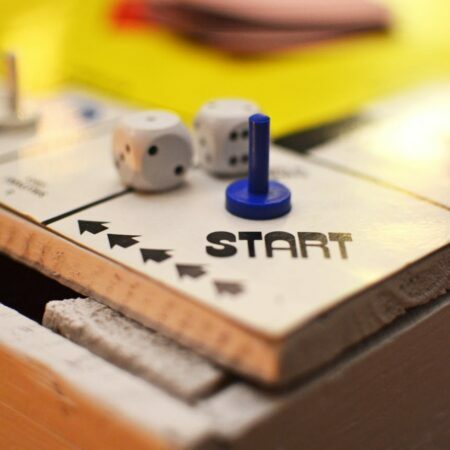Manufacturing makes the world go ’round. From the high-end technology that is present in everything from airplanes to cellphones to the simple functionality behind furniture and utensils, both consumer and industrial products play a major role in everyday life. Before these products can arrive in our homes and businesses, however, they need to follow the vital steps involved in product development.
Any entrepreneur (or creative mind in general) will tell you that imagination is essential when it comes to transforming an idea into reality. That being said, you’re going to need a lot more than a powerful brainstorming session to see your conceptual product come to life; that’s where industrial design comes into play. According to the Industrial Designers Society of America (IDSA), industrial design defines “the professional practice of designing products, devices, objects, and services used by millions of people around the world every day.” This process requires designers and engineers to consider a number of different, often complex aspects to ensure the final product is optimized in terms of form, fit, and function. Let’s take a look at why industrial design is so important in today’s modern world.
Consumer-Focused Mindset
At the end of the day, products are made for consumers. With more than 7.7 billion people living and working on our planet, the demand for quality goods is at an all-time high — but so is competition. As we enter into a new decade, companies can no longer produce something that simply functions as it is supposed to; instead, they need to consider how consumers will interact with their product on an emotional level, how it appeals to them stylistically and aesthetically, and how it will perform during the course of their everyday lives. Every single one of these conditions must be optimized for the target demographic in an attempt to provide overall lasting value for end-users.
Understanding that targets demographic is as essential as understanding the product itself — including its geographic location. If you’re focused on producing a piece of technology that appeals to a certain age or gender, it isn’t enough to simply tailor your industrial design on the interests of that age or gender of one region or nation; in order to compete on the global stage, you need to think globally. In order to create a truly successful product, industrial designers must possess a deep understanding of consumer and market trends.
Threading the Needle
Understandably, this is easier said than done. Designers and engineers are expected to produce innovative designs that are functional, manufacturable, and affordable; they are required to consider the interests of the major stakeholders involved throughout the product lifecycle (i.e., engineering, manufacturing, marketing, and executive management) while also offering a number of different options and flexibility toward new demands.
Fortunately, as our country continues to develop new technologies, satisfying all of these needs is more manageable than ever. New tools and programs (such as Google Material Design, Subform, and Figma) are allowing engineers to work more efficiently, while the implementation of cloud technology provides collaboration among large groups in real-time. Gone are the days of pen and paper sketches; the more we’re able to create and rely on advanced systems, the better our products will be for everyone.
Industrial design plays a major role in global consumerism. A simple glance around your office, car, or bedroom can reveal just how much it impacts our daily lives; from the sleek appearance and luxurious features of the iPhone 11 to the ergonomics of your keyboard or couch, designers and engineers were required to consider every single aspect of use and functionality.
Frequently Asked Questions (FAQs)
- What industrial designers do?
Industrial designers are professionals who design products, devices, objects, and services used by people worldwide. They consider aspects such as functionality, aesthetics, usability, and manufacturability to create innovative and user-centric designs. - Why is design important?
Design is important because it improves the functionality, usability, and aesthetic appeal of products, services, and environments. It enhances user experience, fosters brand identity, and drives innovation and competitiveness in the market. - Industrial design: what is it?
Industrial design is the professional practice of designing products, devices, objects, and services with a focus on functionality, usability, aesthetics, and manufacturability. It involves integrating engineering, art, and business principles to create innovative and user-centered designs. - What is industrial product design?
Industrial product design is the process of creating products, devices, and objects that are optimized for functionality, usability, aesthetics, and manufacturability. It involves designing products that meet the needs and preferences of end-users while considering various technical and commercial factors. - What is the goal of industrial product design?
The goal of industrial product design is to create innovative and user-centered products that meet the needs and preferences of end-users while considering technical, economic, and environmental factors. It aims to enhance the functionality, usability, and aesthetic appeal of products while optimizing their manufacturability and market competitiveness. - Why is industrial design important?
Industrial design is important because it improves the quality, functionality, and usability of products, devices, and services. It enhances user experience, fosters innovation and creativity, drives market competitiveness, and contributes to economic growth and sustainability. - Are industrial designers in demand?
Yes, industrial designers are in demand across various industries, including consumer electronics, automotive, furniture, and healthcare. Their skills in product design, innovation, and user experience are highly valued by companies seeking to create competitive and appealing products. - What does industrial design do?
Industrial design involves designing products, devices, objects, and services with a focus on functionality, usability, aesthetics, and manufacturability. Industrial designers integrate engineering, art, and business principles to create innovative and user-centered designs that meet the needs and preferences of end-users. - Does industrial design require math?
While industrial design may involve some mathematical principles, such as geometry, measurements, and calculations, it is not primarily focused on mathematical skills. However, a basic understanding of mathematics may be beneficial for tasks such as measurements, proportions, and technical drawings.









